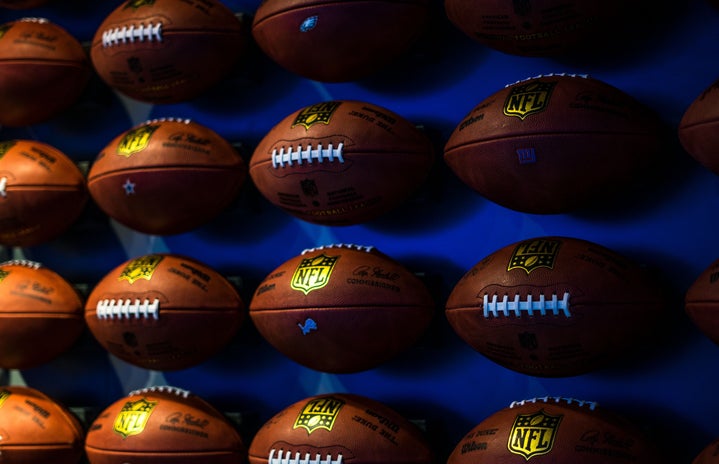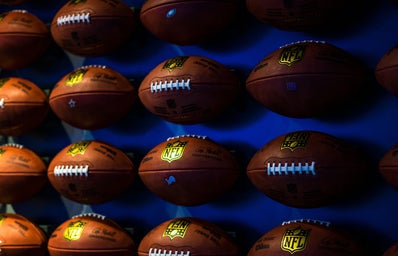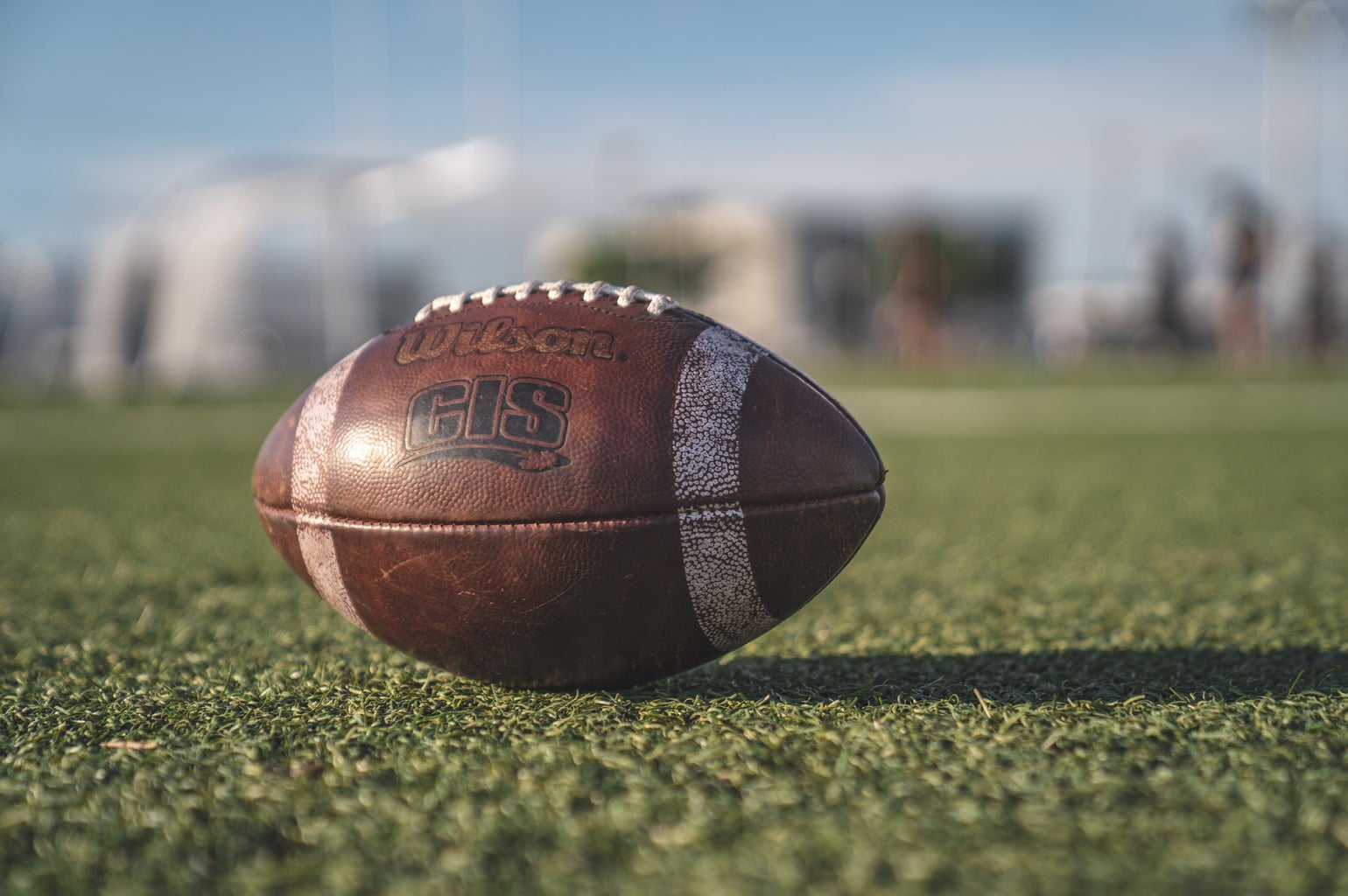The Sport behind OUR Tailgating
As the cool air takes over the campus of James Madison University, the sport of football is only heating up. Despite football being one of the most prominent sports in America, many still do not know the basic rules behind this common game. However, football can be explained through a few noteworthy positions and rules. It is much more motivating to stay for a whole game that you are able to understand!
*Listed under each of the position definitions are the names and numbers of the starting JMU football players for the 2023 season
Offense
Made up of 11 players, the offense is in charge of moving the football down the field toward the opposing team’s end zone, with either the goal of scoring a touchdown (6 points) and a field goal (+1 point) or just a field goal (3 points). Listed below are the main positions that make up the offensive line – excluding the five linemen (the most important lineman is the “center” – who initiates the start of a play by snapping back the ball to the quarterback)
*Ronald Altman #55, Wesley Bostic #62, Breon Brown #69, Brett Davis #70, Aaron Grun #77
QuarterBack
It is the quarterback’s (QB)job to decide which position on the offense he wants to pass to in order to pick up the most yards. Whether this be throwing a pass to the wide receiver, running back or tight end, the goal of the QB is to throw to the player that has the best chances of running the most yards and is least likely to get intercepted (when a player from the other team catches the pass). Alternatively, the QB has the option to run the ball himself.
It is important to note that if a Quarterback gets sacked (tackled while looking to pass the ball), it can cause the offensive team to lose yardage on the field.
*Billy Atkins #11
Runningback
Similar to their position name, the job of the running back (RB) is to catch the football from the QB and run as far down the field as possible. In addition to catching the ball it is important to note that the RB is responsible for finding the best spot to run through in order to get the most amount of yardage. For example, during a game the announcer might say something like – “Atkins hands the ball off to Baldwin, Baldwin makes the quick decision to run towards the middle, where he will be taken down almost immediately at the 40-yard line”.
*Ke’Marion Baldwin #28
Tight end
Lining up closely to the offensive line, it is the tight end’s (TE) job to take on both the running and blocking roles. They must be fully capable of blocking the defensive linemen of the opposing team while still having the ability to run quickly and catch the ball if need be. While TE’s are capable of playing either side, it can still be limiting since they are typically “average” at both positions. But they are still an essential part of making sure that neither the QB nor RB get tackled – ensuring the play goes through.
*Jordan Funk #85
Wide Receiver
Located on the outside of the offensive line (aka the “wide” section), it is the job of the wide receiver (WR) to run as far down the field as they can to make themself accessible to the QB. If the QB decides to not run the ball or hand it off to the RB/TE, then it becomes the WR’s job to catch and run the ball. WRs are most helpful when their team is on their third or fourth “down” (the offensive team gets four attempts to move the football 10 yards on the field and this resets with every 10 yards made). If the offensive line does not move 10 yards after four downs, then the opposing team gets possession of the ball.
Fun Fact: Majority of WRs will wear sticky gloves in order to have better control over the football, especially passes from the QB that require the player to jump in order to catch the ball.
*Reggie Brown #1
Defense
Similar to offense the defense is made up of 11 players. However, goal of the defense is to prevent the other teams’ offense from scoring a touchdown or picking up yardage (running further down the field). Listed below are the positions that make up the defensive line, aside from the defensive linemen.
The 3-4 linemen are split among two positions: “Defensive Tackles” (located in the middle) and “Defensive Ends”. It is the job of both to block the offense, though the DEs must either stop the opposing team’s running back or tackle the QB (sac).
*Carter Banks #42, Payne Bauer #39, Immanuel Bush #55, Greyson Cadd #48
Cornerback & Safety
Another term associated with cornerback (CB) is “defensive back” which is due to the back-end relation of the position in the lineup. It is the responsibility of the CB to cover the wide receiver of the opposing team and to help limit who their QB can make a pass to. If the CB does not choose to tackle the WR then they can choose to try and catch the ball instead (interception). The number of CB/safeties (there can be up to six) on the field is dependent on how many WRs there are on the field from the opposing team.
While CBs are in the back of the lineup, the safeties are the very last line of defense. Similar to CBs they are tasked with covering the offense, though it is on a broader spectrum. There are two safeties on the field at a time, one typically lining up in front of the offense’s tight end (strong safety) and the other one taking cover at the opposite end (free safety).
*CB: Brent Austin #23, Antoine Booth #31, Devyn Coles #26
*S: DJ Barksdale #32 & Jahquil Batts #35
Linebacker
Linebackers are found directly behind the defensive line and are notably smaller than the defensive linemen. It is the job of the linebacker to prevent offensive positions like the RB, TE, and WRs from picking up yardage, so their smaller size attributes to their ability to quickly maneuver through the offensive lineman. The linebackers are the middleman who takes on the role of trying to “predict” what play the offense is going to choose to direct the defense on where to go. This is why the middle linebacker is often referred to as “the quarterback of the defense”.
*LB: Julio Ayamel #6, Matthew Channell #43, Brandon Fique #54
Special Teams
There are five positions that are categorized under “special teams”, which are separate from the team’s offense and defense. Listed in the table below are the five positions, along with a short description of their responsibilities.
| Kicker *Camden Wise #40 |
Kick the ball in three specific situations – At kickoff (start of a quarter), Field goal (3 points), and the field goal after a touchdown is made (1 point). |
| Punter *Ryan Hanson #48 |
Often used when the offensive team is not going to make it to the fourth down (last try to reach 10 yards), in order to create more yardage for the other team. When a punter is brought out it means that the opposing team takes offense (possession of the ball). |
| Kick Returner *N/A |
After the ball is kicked (by the kicker), it is the job of the kick returner to catch the ball and run as far up the field as possible. |
| Punt Returner *N/A |
Similar to the kick returner, it is the job of the punt returner to catch and run the ball. However, in most cases the PR will choose to not run after catching the ball to avoid being tackled. |
| Long Snapper *N/A |
This position is specially used in field goal situations, since it is the job of the long snapper to “snap”(pass the ball backwards through their legs) the football to whoever is positioning the ball for the punter/kicker. |


